The authentic Pesto Genovese, a classic basil pesto from Northern Italy, is celebrated for its vibrant green color and rich, nutty flavor. To create this traditional sauce, you'll need fresh basil, high-quality extra virgin olive oil, Parmigiano Reggiano, Pecorino Sardo, pine nuts, and garlic. Selecting the right ingredients is crucial to achieving the best homemade pesto taste.
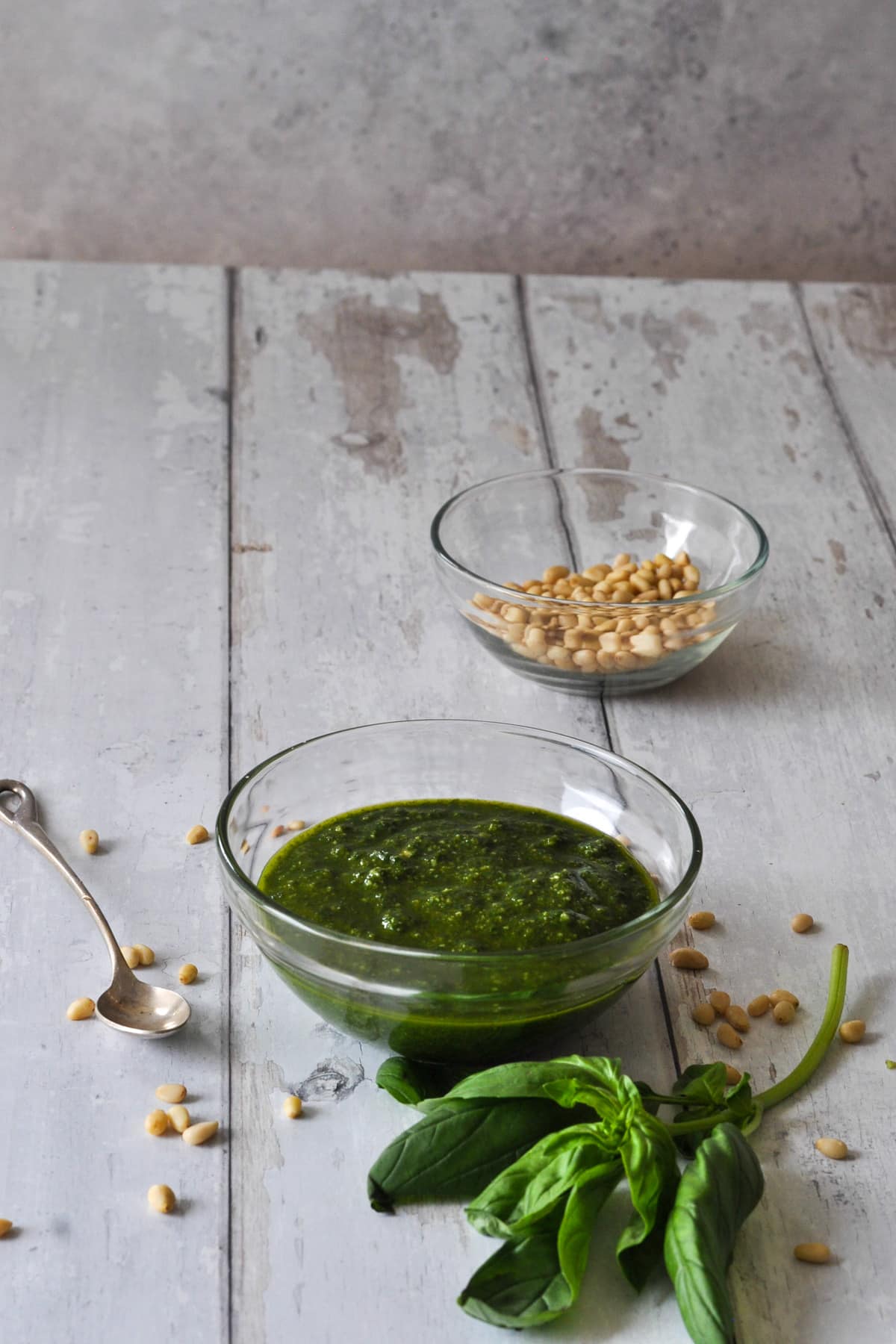
Jump to:
While basil was once regarded primarily as an ornamental plant, its culinary applications expanded during the 18th and 19th centuries.
The Liguria region, nestled between the Mediterranean Sea and the Alps, emerged as the largest basil producer thanks to its perfect micro-climate, paving the way for the birth of the iconic Pesto Genovese.
The original recipe was crafted using a marble mortar and wooden pestle, but today, a food processor simplifies the process considerably.
Despite the availability of pre-made jars of pesto alla Genovese, a home freshly made pesto offers a superior taste, with the choice of the right ingredients being paramount.
The traditional way to serve it is with Trofie pasta, green beans, and potatoes, and you can find the authentic recipe in the article Traditional Fresh Trofie Pasta With Pesto Genovese
Alternatively, you can also serve it with your favorite short pasta, linguini, or fluffy potato gnocchi.
The term "pesto," derived from the Italian verb 'pestare' meaning to grind or to pound, opens the door to a variety of pesto sauce recipes beyond the Genovese classic.
From the Sicilian Pistachio pesto to Trapanese Pesto rosso made with fresh tomatoes, and variations using arugula, parsley, or mint, the possibilities are endless.

Ingredients
- Genovese basil: The optimal choice for pesto is the DOP-certified Genovese Basil, characterized by medium bright green leaves about less than 3 inches (7 cm) in length, without any mint or anise flavor. The most renowned type comes from Pra', a small town near Genova.
- Fresh garlic cloves: Add a sharp depth of flavor, integral to the pesto's signature taste. As many have developed an allergy to garlic, it is becoming an optional ingredient. Fresh is imperative, do not use garlic powder
- Parmigiano Reggiano or Grana Padano cheese and Pecorino from Sardinia: These cheeses are recommended, with the Sardinian Pecorino called Fiore Sardo being less pungent than Pecorino Romano cheese.
- European pine nuts: Important for their distinctive, nutty flavor.
- Good quality fruity extra virgin olive oil: Crucial for its rich taste and aroma.
- Salt: To enhance the flavors of the ingredients.
The indicative measurements are in the recipe card, but they can be varied depending on the singular taste
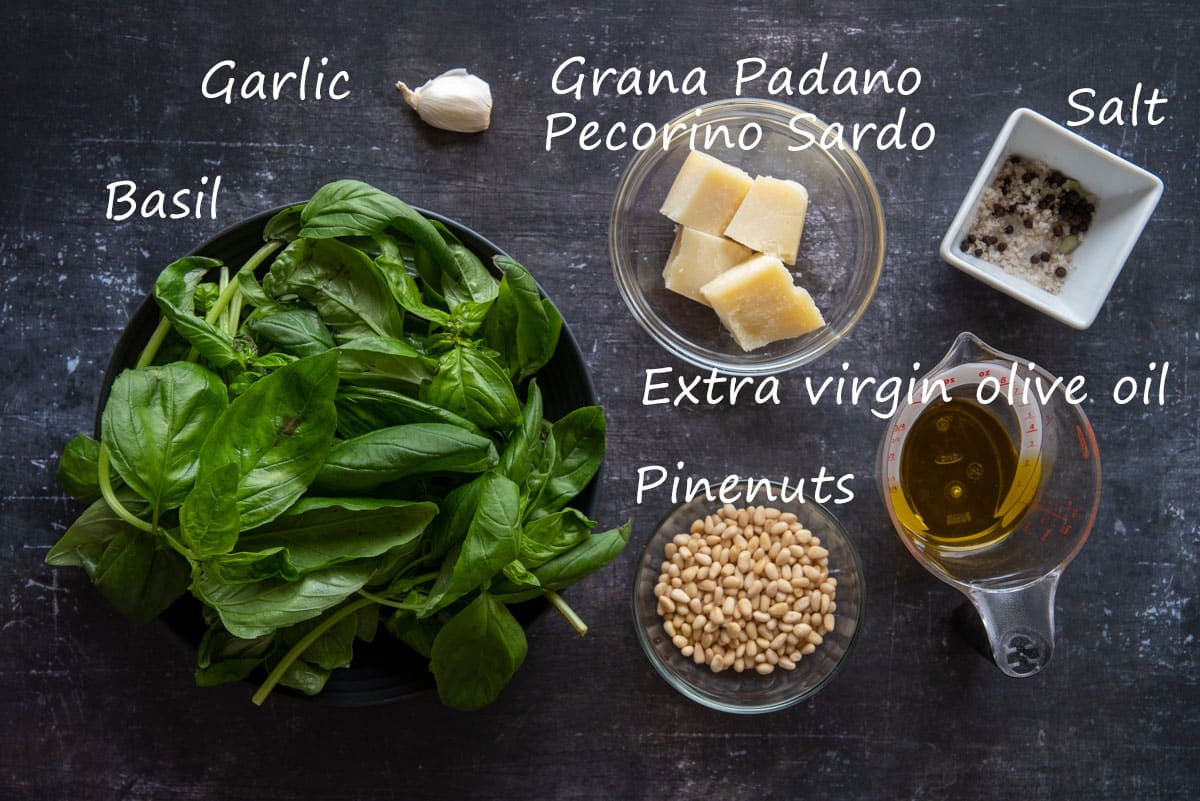
Instruction with step-by-step images
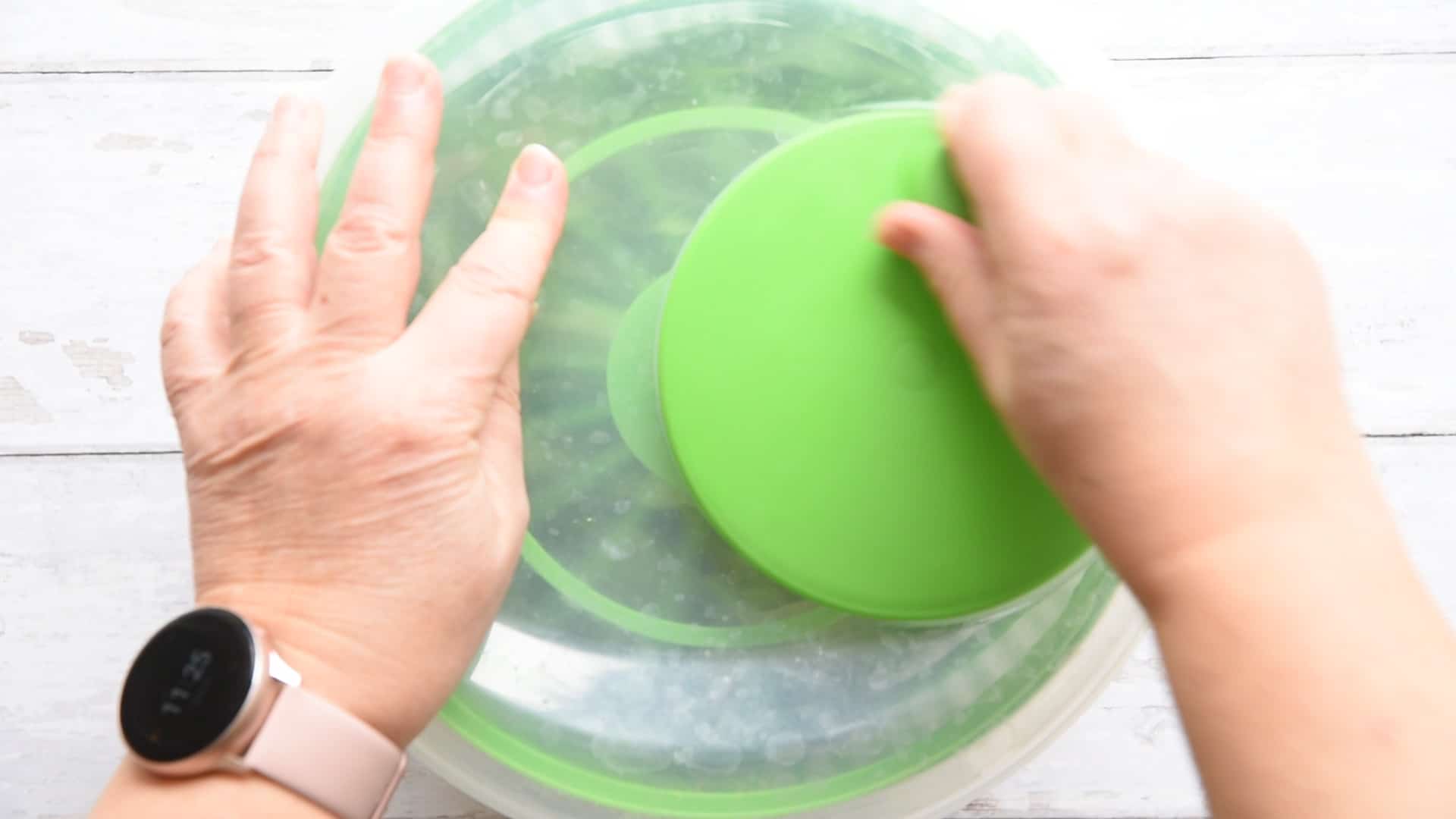
- Gently rinse the basil under fresh water then drain the leaves and dry them thoroughly with a vegetable spinner.

- Remove the basil leaves from the stems
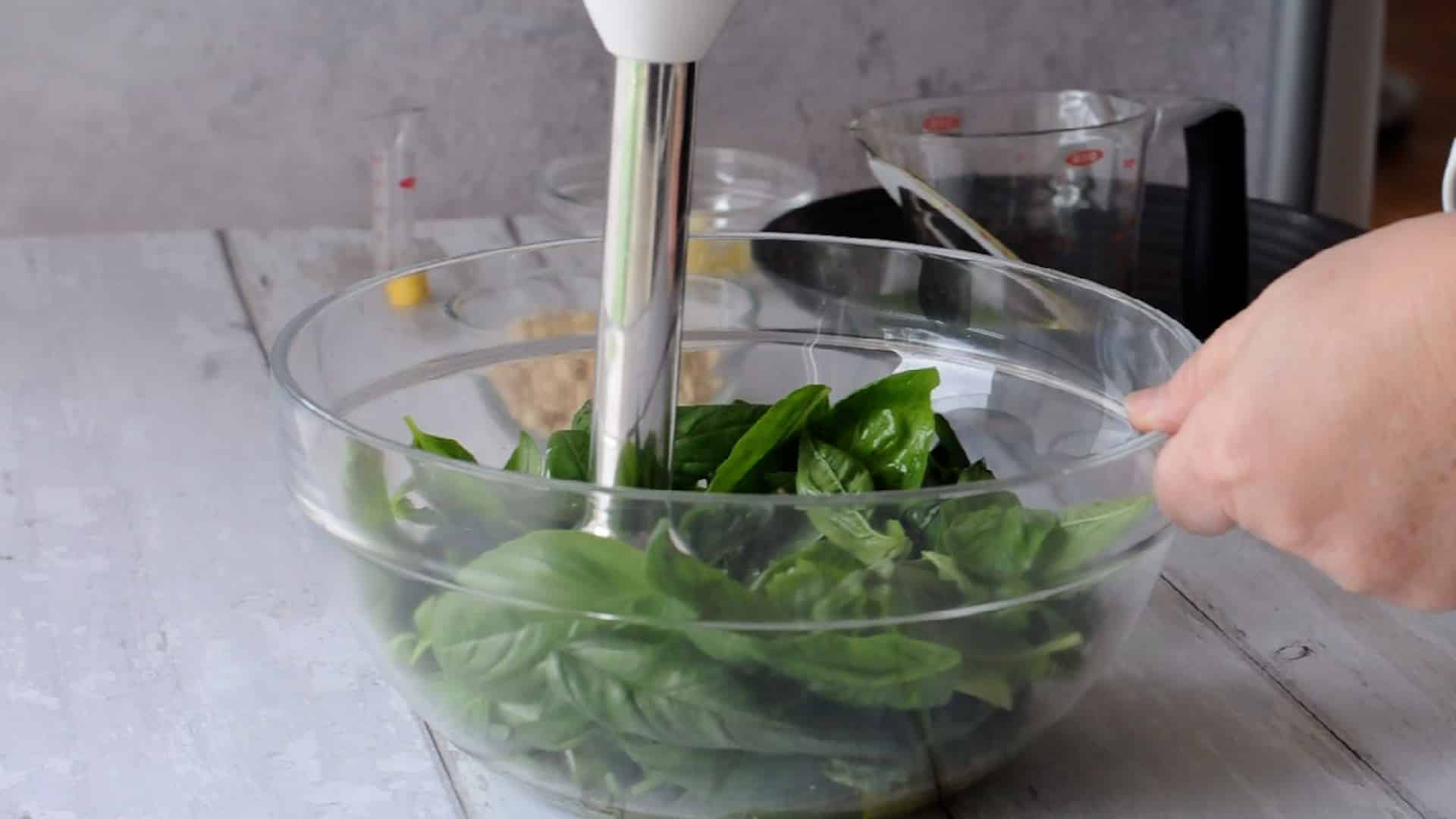
- Place all the ingredients in a bowl, pulsing the mixture in short bursts with a food processor or a hand blender

- Continue pulsing until the pesto becomes a smooth paste and reaches a creamy consistency
N.B.: This intermittent chopping is crucial for maintaining the pesto's vibrant green color as it prevents the basil from oxidizing and turning dark.
- Use the pesto immediately, or if storing, cover the surface with a thin layer of olive oil to preserve its color and freshness.

How to serve it
You can serve your freshly made Pesto Genovese in different ways:
- With Pasta: For a classic Ligurian dish, mix the pesto with freshly cooked Trofie pasta, boiling the green beans and potatoes together with the pasta based on their cooking time. This combination offers a delightful blend of textures and flavors. Pesto also pairs beautifully with short pasta like penne or linguine. You can make the pesto creamier by adding pasta water or butter
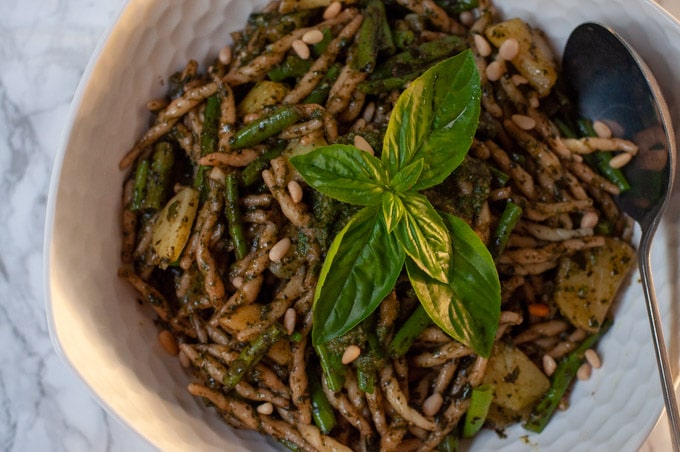
- As a Spread or dipping sauce, Spread your Genovese pesto on slices of bruschetta, toasted baguette, or ciabatta for a simple yet flavorful appetizer. It's perfect for starting a meal or for snacking during gatherings.
- With Proteins: Pesto can enhance the flavor of grilled or roasted chicken, fish, and even steak. Just a spoonful can turn a plain protein into a gourmet delight.
- In Salads or soups: Stir a tablespoon of pesto into the dressing or soup to infuse the greens with a touch of Italian flair.
- On Pizza: Swap out the traditional tomato sauce for pesto and the mozzarella with the creamy stracchino cheese. This is a classic Pizza from Genova
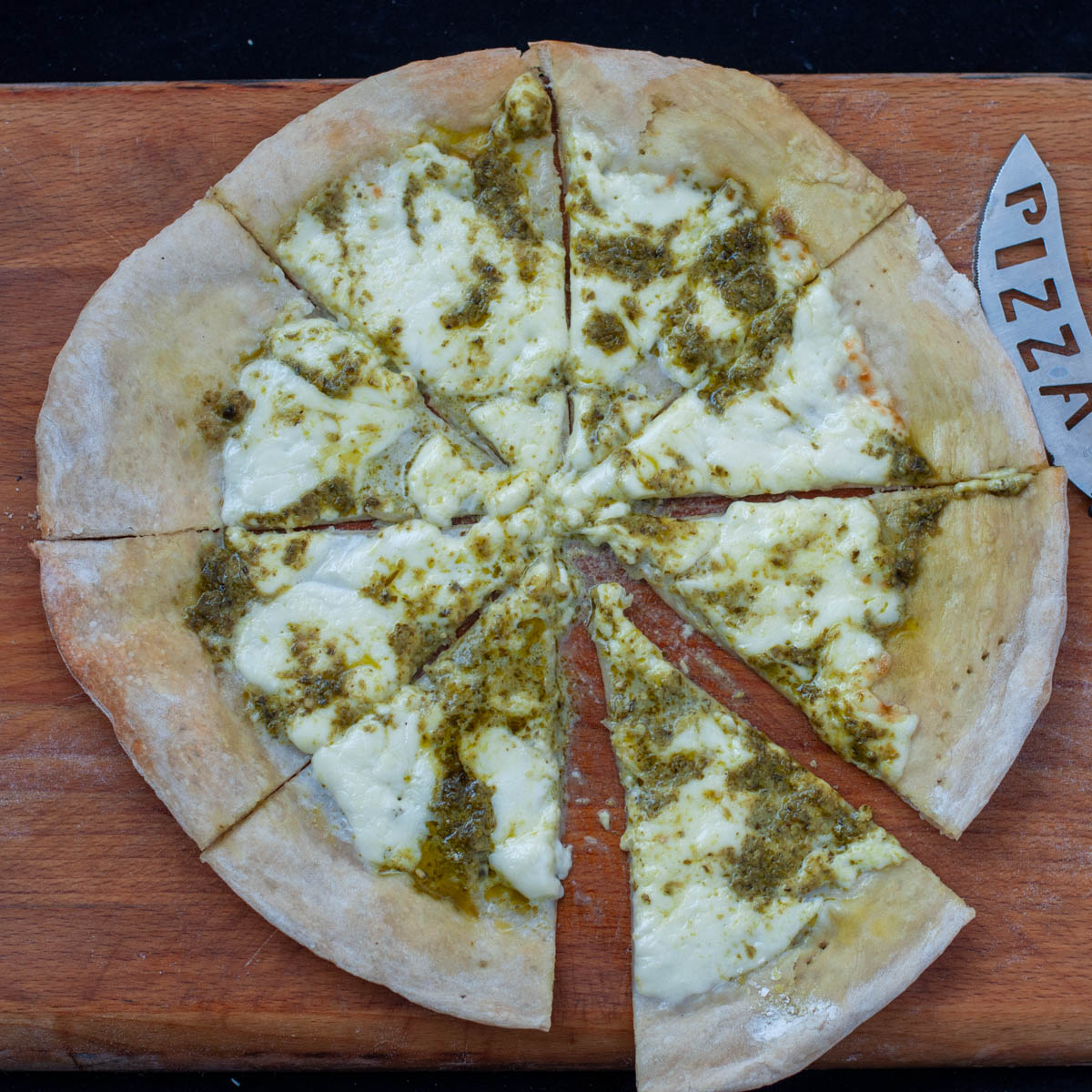
How to store it
To store your Pesto Genovese and maintain its freshness and flavor, follow these guidelines:
Place the pesto in an airtight container and gently pour a thin layer of olive oil over the surface. The olive oil acts as a barrier against air, helping to preserve the vibrant green color and prevent oxidation.
Stored this way, your pesto can last in the refrigerator for 2 to 3 days. Ensure the container's lid is securely fastened to maintain freshness and to prevent absorbing other flavors from the fridge.
While some may choose to freeze pesto in ice cube trays for more extended storage,I don't recommend it as the pesto will lose its taste and texture.
Freezing is a practical option only if you have a significant amount of leftovers or plan to use the pesto as a seasoning in cooked dishes, where the subtle nuances of fresh pesto are less critical.
You can also use it to make Italian flavoured breadcrumbs and freeze them.
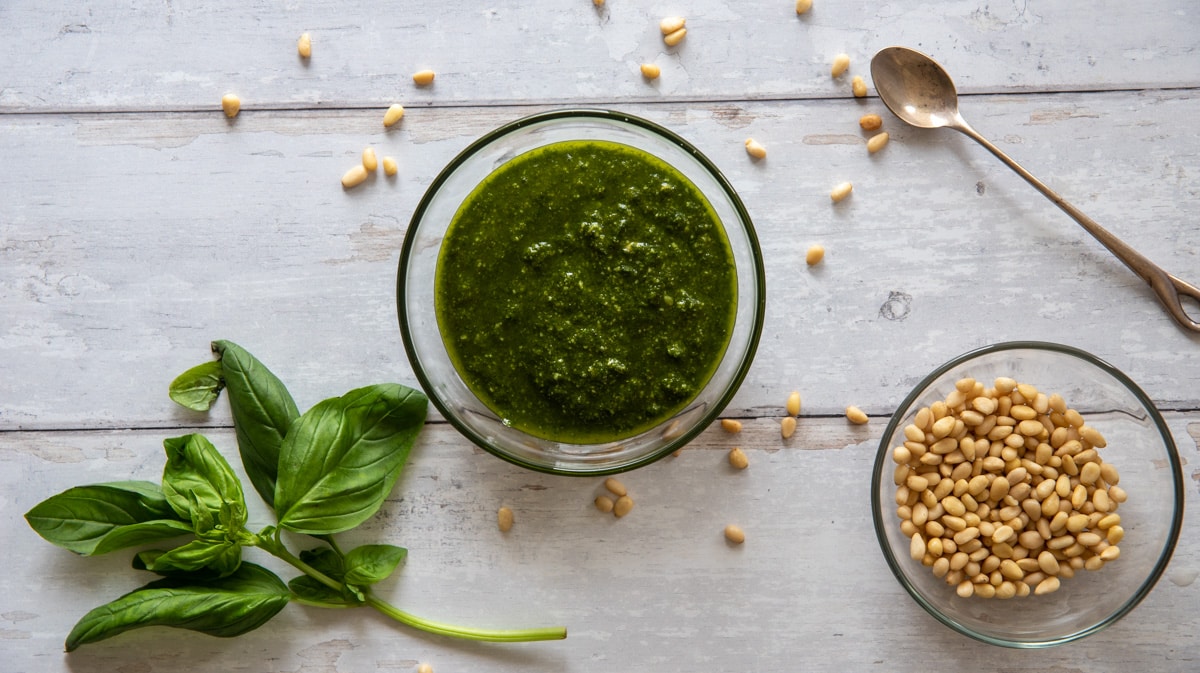
Recipes to use pesto
If you are making this authentic Genovese Pesto Sauce, leave your comment below I would like to hear from you. You can find more delicious ideas if you FOLLOW ME on Facebook, YouTube, or sign up to my newsletter.
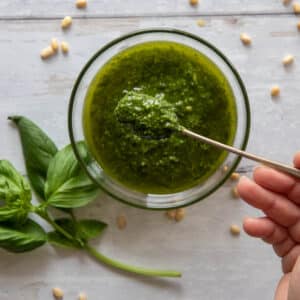
Pesto Genovese Recipe
Ingredients
- 2 bunches fresh basil leaves about 2 oz - 50 g
- 1 peeled garlic cloves
- 2 tablespoon freshly grated Parmesan or Grana Padano
- 2 tablespoon Pecorino Sardo optional
- 1 tablespoon pine nuts
- ½ cup extra virgin olive oil
- teaspoon salt
Instructions
- Gently rinse the basil under fresh water then drain the leaves and dry them thoroughly with a vegetable spinner.2 bunches fresh basil leaves
- Remove the basil leaves from the stems
- Place all the ingredients in a bowl, pulsing the mixture in short bursts with a food processor or a hand blender1 peeled garlic cloves, 2 tablespoon freshly grated Parmesan, 2 tablespoon Pecorino Sardo, 1 tablespoon pine nuts, ½ cup extra virgin olive oil, tsp salt
- Continue pulsing until the pesto becomes a smooth paste and reaches a creamy consistency
- Use the pesto immediately, or if storing, cover the surface with a thin layer of olive oil to preserve its color and freshness.
Video
Notes
Nutrition



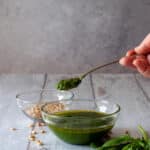
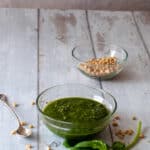
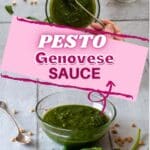
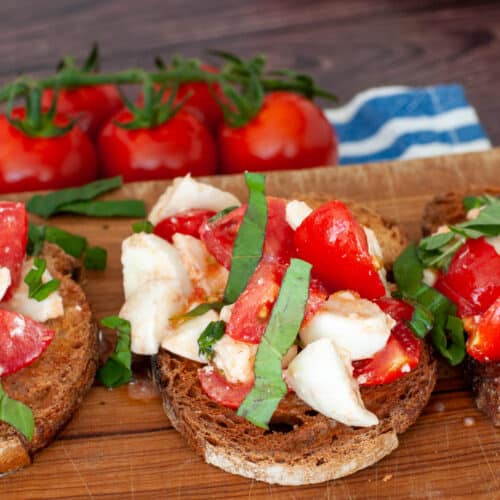

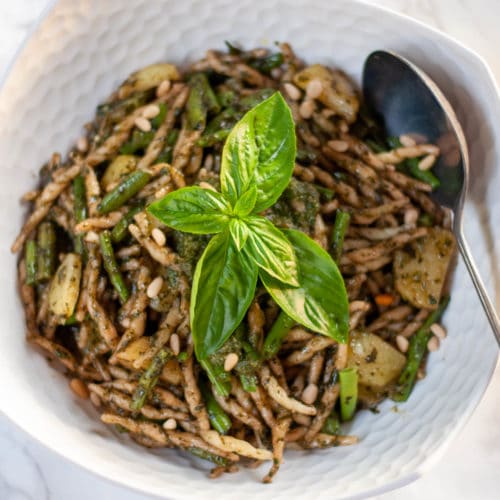

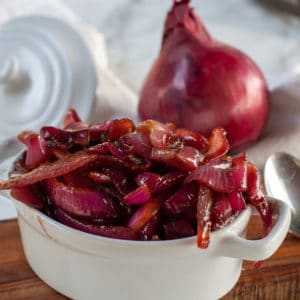


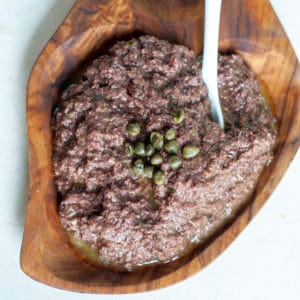
Leave a Reply